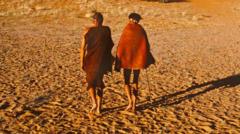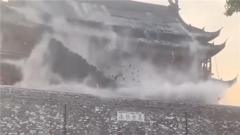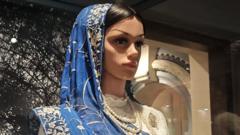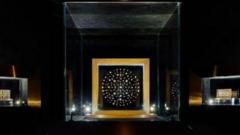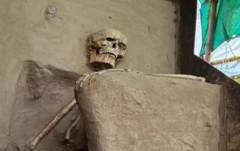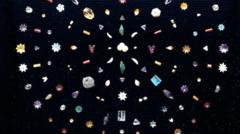The National Museum of Cambodia is experiencing a significant challenge as it welcomes back approximately 300 returned artifacts, originally looted, but it is now grappling with space limitations and the need for respectful representation of cultural heritage.
Cambodia's National Museum Faces Challenges Amidst a Repository of Returned Artifacts

Cambodia's National Museum Faces Challenges Amidst a Repository of Returned Artifacts
As Cambodia's National Museum copes with an influx of returned artifacts, the struggle to find adequate space and meaningful presentation remains paramount.
The four cavernous wings of Cambodia’s National Museum in Phnom Penh are overflowing with cultural artifacts, forcing visitors to navigate the tightly packed displays of around 1,400 items. Over the last six years, the museum has seen the return of approximately 300 valuable artifacts, which has compounded its spatial challenges. Some of these returned pieces, including large statues comparable in size to refrigerators, now sit in their protective packaging underneath the museum's striking blood-red roof, indicating a museum bursting at the seams.
Director Chhay Visoth identified the need for expansion and renovation in an interview conducted in the museum's courtyard. However, significant questions remain regarding funding, management of potential upgrades, and addressing the internal politics that come with such changes. Additionally, there is a profound cultural responsibility to respect the spiritual significance such artifacts hold for many Cambodians. For them, these statues are far more than mere historical objects; they are divinities that encapsulate the souls of their ancestors.
Huot Samnang, the head of Cambodia’s antiquities department, emphasized this perspective, stating that visitors often approach the museum not merely as a cultural institution but as a sacred space, akin to a temple. For many, the journey is about connecting with their past, seeking the presence of their gods, and paying homage to their heritage. Balancing the needs of a museum and the spiritual significance of its collections presents a complex challenge as Cambodia continues to reclaim its cultural identity through these significant returns.
Director Chhay Visoth identified the need for expansion and renovation in an interview conducted in the museum's courtyard. However, significant questions remain regarding funding, management of potential upgrades, and addressing the internal politics that come with such changes. Additionally, there is a profound cultural responsibility to respect the spiritual significance such artifacts hold for many Cambodians. For them, these statues are far more than mere historical objects; they are divinities that encapsulate the souls of their ancestors.
Huot Samnang, the head of Cambodia’s antiquities department, emphasized this perspective, stating that visitors often approach the museum not merely as a cultural institution but as a sacred space, akin to a temple. For many, the journey is about connecting with their past, seeking the presence of their gods, and paying homage to their heritage. Balancing the needs of a museum and the spiritual significance of its collections presents a complex challenge as Cambodia continues to reclaim its cultural identity through these significant returns.



